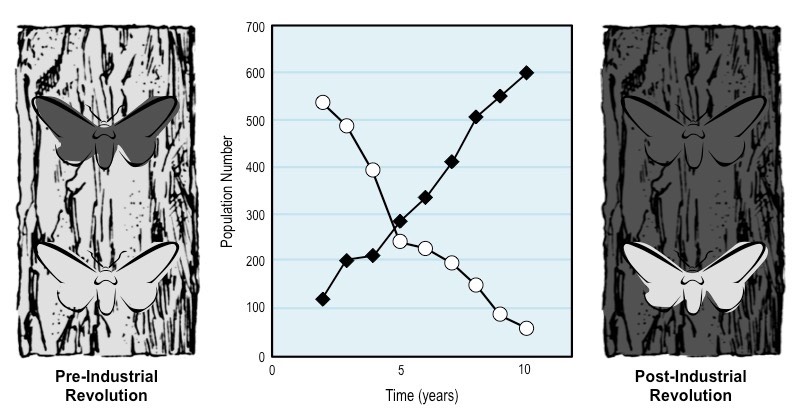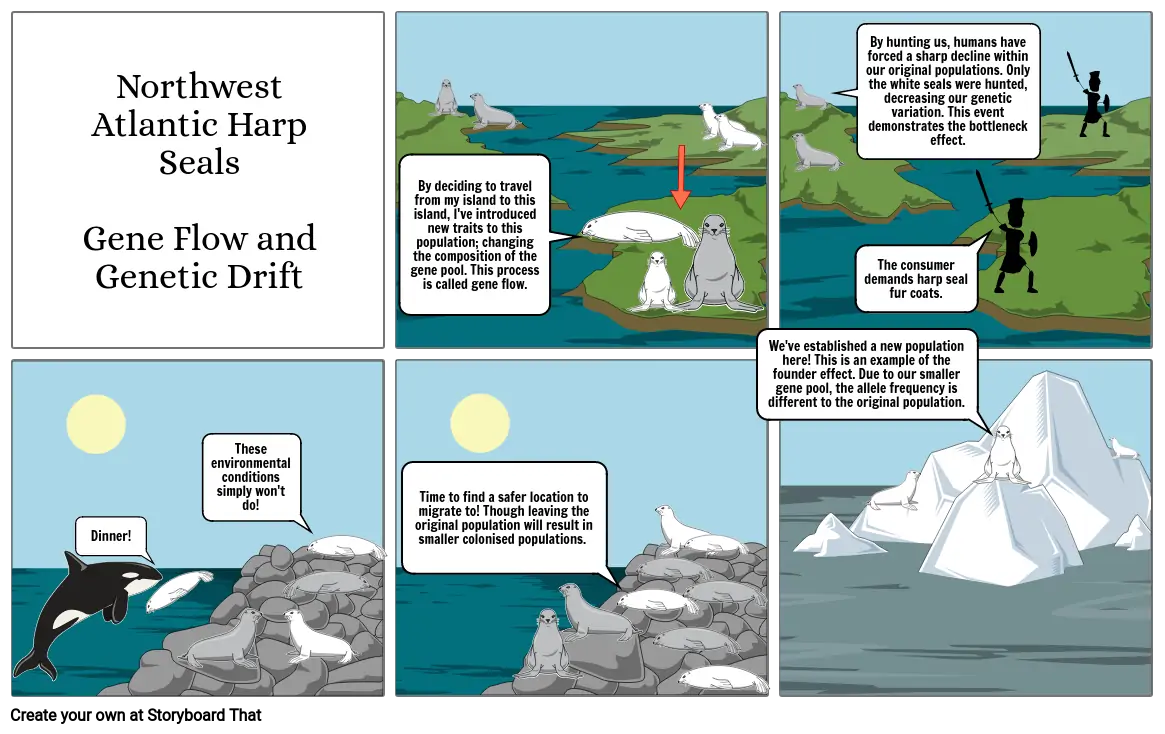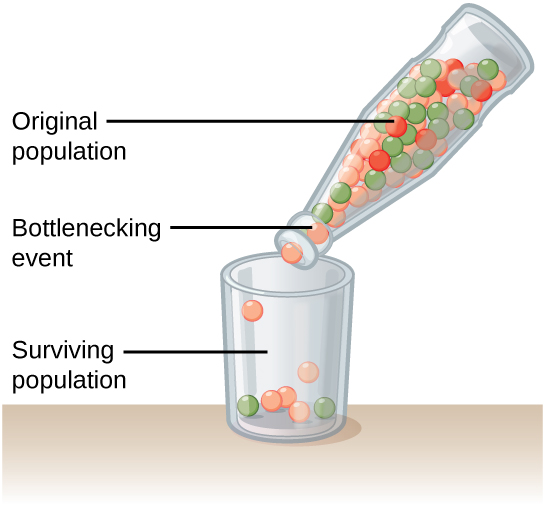Jed Quiaoit
Samantha Himegarner
AP Biology 🧬
358 resourcesSee Units
Evolution acts upon the genetic variety within a population, and genetic variety can also be driven by random occurrences.
Mutations
Mutations, for one, are a source of genetic variation within a population, and this variation is the raw material upon which natural selection can act. Mutations can arise from a variety of causes, such as errors in DNA replication, exposure to radiation or certain chemicals, and viral infections. 🧪
The vast majority of mutations are neutral, meaning they have no effect on the organism's fitness. These neutral mutations accumulate over time and can be used to infer the evolutionary relationships between different species.
However, some mutations can have an effect on the fitness of an organism, and these are known as beneficial or deleterious mutations. Beneficial mutations are those that increase an organism's chances of survival and reproduction, while deleterious mutations decrease those chances.
The peppered moth example is a well-known example of how beneficial mutations can occur in response to environmental changes. The moths changed the color of their wing from light to dark to better camouflage from predators in the industrial revolution.

Source: BioNinja
It's worth noting that the effects of mutations are not always straightforward and can depend on the context. A mutation that is beneficial in one environment might be deleterious in another, or a mutation that is beneficial for one aspect of an organism's fitness might be deleterious for another. Overall, mutations are an important driver of evolution and help to create the diversity of life we see around us today! 👶
Genetic Drift and Gene Flow
Genetic drift occurs due to random fluctuations in the frequency of alleles (versions of a gene) in a population. These fluctuations can happen for a variety of reasons, such as chance events like a natural disaster (e.g. volcanic eruptions), which kills a significant proportion of a population and disproportionately affects certain individuals. Because of this, genetic drift can lead to a loss of genetic variation within a population. 🌋
The effect of genetic drift is more pronounced in small populations, because the random fluctuations in allele frequency are more likely to be large relative to the overall size of the population. This can result in the loss of certain alleles from a small population, or even the fixation of alleles (when an allele reaches 100% frequency in a population).
Another important mechanism of evolution is gene flow, which is the movement of genes from one population to another. Gene flow can occur when individuals migrate from one population to another, bringing their genes with them. This can introduce new alleles into a population and increase its genetic diversity. Gene flow can also act to homogenize the genetic makeup of populations that are geographically close to each other, by reducing the frequency of rare alleles in a population.

Source: Storyboard That
Both genetic drift and gene flow can affect the genetic makeup of a population and therefore the evolution of a species, and both are different from natural selection that is driven by the environment. While natural selection can only act on the current phenotypic expression and the environment, the other two mechanisms act more on the genetic makeup itself. Understanding the different ways that evolution can happen is important for understanding how species change over time and how different populations are related to each other.
The Founder Effect and The Bottleneck Effect
The founder effect and the bottleneck effect are both types of genetic drift that can occur when a small subset of a population becomes isolated from the rest. 🍾
The founder effect occurs when a small group of individuals breaks away from a larger population and colonizes a new area.
This small group is likely to have a different genetic makeup from the larger population, due to chance events such as genetic drift or genetic differences that existed prior to the colonization. As this small group reproduces and grows, the unique genetic characteristics that are present in the founders will become more prevalent in the new population. This can lead to the overrepresentation of certain alleles and the loss of others, which can affect the allele frequencies of the new population compared to the original population.
The bottleneck effect is similar to the founder effect in that it also occurs when a population becomes smaller, but it differs in that it is a result of a catastrophic event, such as a natural disaster, disease outbreak, or human activity, that results in a reduction of population size. The bottleneck effect can result in a loss of genetic variation in the population due to chance events, and the population will become less diverse than the original population.
Both of these effects can have a significant impact on the genetic makeup of a population and can lead to changes in allele frequencies, which can in turn influence the evolution of the population. It's also worth noting that these effects can also interact with natural selection: after the population has passed through the bottleneck or founder effect, the remaining genetic variation will be more strongly shaped by natural selection because of the loss of some genetic variants.

Image courtesy of WikiMedia Commons.
Gene flow is grounded in a similar concept, but with a less extreme outcome. It simply describes the phenomenon of how immigration (movement of individuals into a population) and emigration (movement of individuals out of a population) can affect allele frequencies as well. Gene flow is more common and less disastrous, and helps to explain how alleles and phenotypes can be added and removed from populations. 💀
Speciation
Together, genetic drift and gene flow can lead to the separation of populations and the development of new species, a process known as speciation. When populations are separated and can no longer interbreed, they will evolve independently, and over time, the genetic differences between the populations will become so great that the populations will be unable to produce viable offspring if they do interbreed. At this point, the populations will be considered separate species. Especially in an example with a founder’s effect, the two populations may begin to reproduce and evolve separately, each with their own unique favorable traits.
It's important to note that, this speciation process can be gradual or rapid, and also it may be influenced by other factors such as environmental changes, competition for resources and adaptation to different environments, leading to different modes of speciation. ☁️
Browse Study Guides By Unit
🧪Unit 1 – Chemistry of Life
🧬Unit 2 – Cell Structure & Function
🔋Unit 3 – Cellular Energetics
🦠Unit 4 – Cell Communication & Cell Cycle
👪Unit 5 – Heredity
👻Unit 6 – Gene Expression & Regulation
🦍Unit 7 – Natural Selection
🌲Unit 8 – Ecology
📚Study Tools
🧐Exam Skills

Fiveable
Resources
© 2025 Fiveable Inc. All rights reserved.